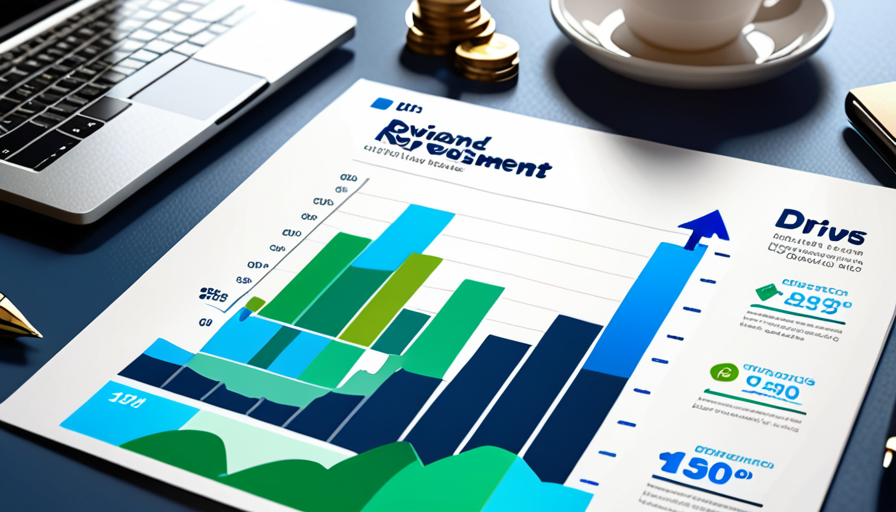Understanding Dividend Reinvestment Plans (DRIPs)

Introduction
investing in the stock market can be both rewarding and complex, especially when it comes to maximizing returns through dividends. One strategy that savvy investors often consider is enrolling in a Dividend Reinvestment Plan, commonly known as DRIP. In this comprehensive guide, we will delve into what DRIPs are, their Benefits, potential drawbacks, and how they can be an effective tool for building wealth over time.
What Are DRIPs?
A Dividend Reinvestment Plan (DRIP) is a program offered by many companies that allows investors to automatically reinvest dividends earned from shares back into additional shares of the same company. Instead of receiving dividend payments in cash, these are used to purchase more stock on behalf of the investor. Many DRIP programs allow this process to happen without any commission fees or even fractional shares, making it an attractive option for long-term investors.
How Do DRIPs Work?
When a shareholder enrolls in a company’s DRIP, they essentially instruct their brokerage account to automatically reinvest dividends into additional shares of the issuing company. The process is typically handled by the brokerage firm or directly by the company, depending on where the investor holds their shares. Here's how it generally works:
- Dividend Declaration: When a company declares a dividend, the amount is calculated per share owned.
- Reinvestment: Upon receiving the dividend payment date, instead of depositing cash into your bank account, the dividends are used to buy more shares.
- Purchasing Shares: The brokerage or issuing company will determine the number of additional shares purchased based on the current stock price at the time of reinvestment.
Key Features
- Automatic Reinvestment: DRIPs streamline the process by automating it, eliminating the need for manual intervention from investors.
- Fractional Shares: Many DRIP programs allow the purchase of fractional shares, ensuring that all dividend money is utilized efficiently.
- commission-Free: Most companies offering DRIPs waive transaction fees or commissions, making them cost-effective.
Benefits of Dividend Reinvestment Plans
DRIPs are popular among investors for several reasons. Here are some key Benefits:
Compounding Growth
One of the most significant advantages of a DRIP is the power of compounding. By continually reinvesting dividends to purchase more shares, investors can increase their holdings over time without additional out-of-pocket Investment. This exponential growth can significantly enhance long-term returns.
For example, consider an investor who buys $10,000 worth of a company's stock that pays a 3% dividend annually. If the dividends are reinvested, the value of their Investment will grow not only from the appreciation in stock price but also from the additional shares purchased with the reinvested dividends.
Dollar-Cost Averaging
DRIPs help investors take advantage of dollar-cost averaging (DCA). Since new shares are bought at regular intervals regardless of market conditions, this strategy can reduce the impact of volatility on the overall Investment. By spreading out purchases over time, investors can mitigate the risk of buying at a peak and instead average out their purchase price.
Automatic Reinvestment
One of the most appealing aspects of DRIPs is the automatic nature of the reinvestment process. This feature ensures that dividends are consistently reinvested without requiring any action from the investor. This hands-off approach can be particularly beneficial for those who prefer a set-it-and-forget-it Investment strategy.
Potential for Lower Costs
Many companies offer DRIPs directly to shareholders, which can result in lower administrative costs compared to traditional brokerage accounts. Additionally, some DRIPs allow investors to purchase shares at a discount to the market price, further enhancing their potential returns.
Long-Term Wealth Accumulation
DRIPs are particularly effective for long-term wealth accumulation. Over extended periods, the compounding effect of reinvested dividends can lead to substantial growth in an investor's portfolio. This makes DRIPs an excellent choice for retirement savings and other long-term financial goals.
Tax advantages
In some cases, DRIPs can offer Tax advantages. For example, if you hold dividend-paying stocks in a tax-advantaged account such as an IRA or 401(k), the reinvested dividends can grow tax-deferred until retirement. This can result in significant tax savings over time.
Potential Drawbacks of DRIPs
While DRIPs offer numerous Benefits, there are also potential drawbacks to consider:
Concentration Risk
One of the main risks associated with DRIPs is concentration risk. By automatically reinvesting dividends into a single stock, investors may end up holding a disproportionately large amount of their portfolio in that company. This can increase exposure to company-specific risks and reduce diversification.
Opportunity Cost
By automatically reinvesting dividends into a single stock, investors might miss out on potential higher returns from other Investment opportunities that could offer better growth prospects or diversification Benefits. For example, if the stock market offers more attractive Investment options, an investor locked into a DRIP may not be able to take advantage of these opportunities.
Tax Implications
While reinvested dividends can grow tax-deferred in certain accounts, they are still subject to taxation in taxable accounts. investors need to be aware of the tax implications and plan accordingly to minimize their tax liability.
market volatility
DRIPs do not protect investors from market volatility. If the stock price declines, the value of reinvested dividends will also decrease. This can result in a lower overall return on Investment during periods of market downturns.
Setting Up and Managing DRIPs
Setting up a DRIP is relatively straightforward. Here’s how you can get started:
- Check Eligibility: Ensure that the company whose stocks you hold offers a DRIP.
- Enroll Through Brokerage: Most investors enroll through their brokerage account, which will handle the reinvestment process.
- Review and Monitor: Periodically review your investments to ensure alignment with your financial goals. Adjust if necessary.
Steps to Enroll in a DRIP
- Identify Eligible Companies: Research companies that offer DRIPs and determine if they align with your Investment strategy.
- Contact the Company or Brokerage: Reach out to the company's investor relations department or your brokerage firm to enroll in the DRIP.
- Complete Enrollment Forms: Fill out any necessary forms, which may include providing personal information and specifying how you want dividends reinvested (e.g., purchasing additional shares or fractional shares).
- Set Up Automatic Reinvestment: Ensure that your account is set up for automatic dividend reinvestment to take full advantage of the DRIP.
Managing Your DRIP
Managing a DRIP involves regular monitoring and periodic adjustments to ensure it aligns with your financial goals:
- Review Performance: Regularly review the Performance of the stocks in your DRIP to assess their growth potential.
- Diversify Your portfolio: Consider diversifying your portfolio by investing in multiple companies or sectors to reduce concentration risk.
- Adjust Reinvestment Settings: If necessary, adjust your reinvestment settings based on changes in market conditions or personal financial goals.
When to Consider Exiting a DRIP
There are several scenarios where it might be prudent to exit a DRIP:
- Poor company performance: If the company's Performance deteriorates significantly, it may be wise to sell your shares and reinvest the proceeds in more promising opportunities.
- Changes in financial goals: As your financial goals evolve, you may need to adjust your Investment strategy. For example, if you are nearing retirement, you might want to shift to a more conservative portfolio.
- Market Conditions: During periods of high market volatility, it may be beneficial to temporarily halt dividend reinvestment and hold cash instead.
DRIPs offer a convenient and effective way to accumulate wealth over the long term through automatic dividend reinvestment. However, they also come with potential risks such as concentration risk and opportunity cost. By understanding these Benefits and drawbacks, investors can make informed decisions about whether DRIPs are suitable for their financial goals.
Regular monitoring and periodic adjustments are essential to ensure that your DRIP aligns with your Investment strategy and helps you achieve your long-term financial objectives.
Also read:
